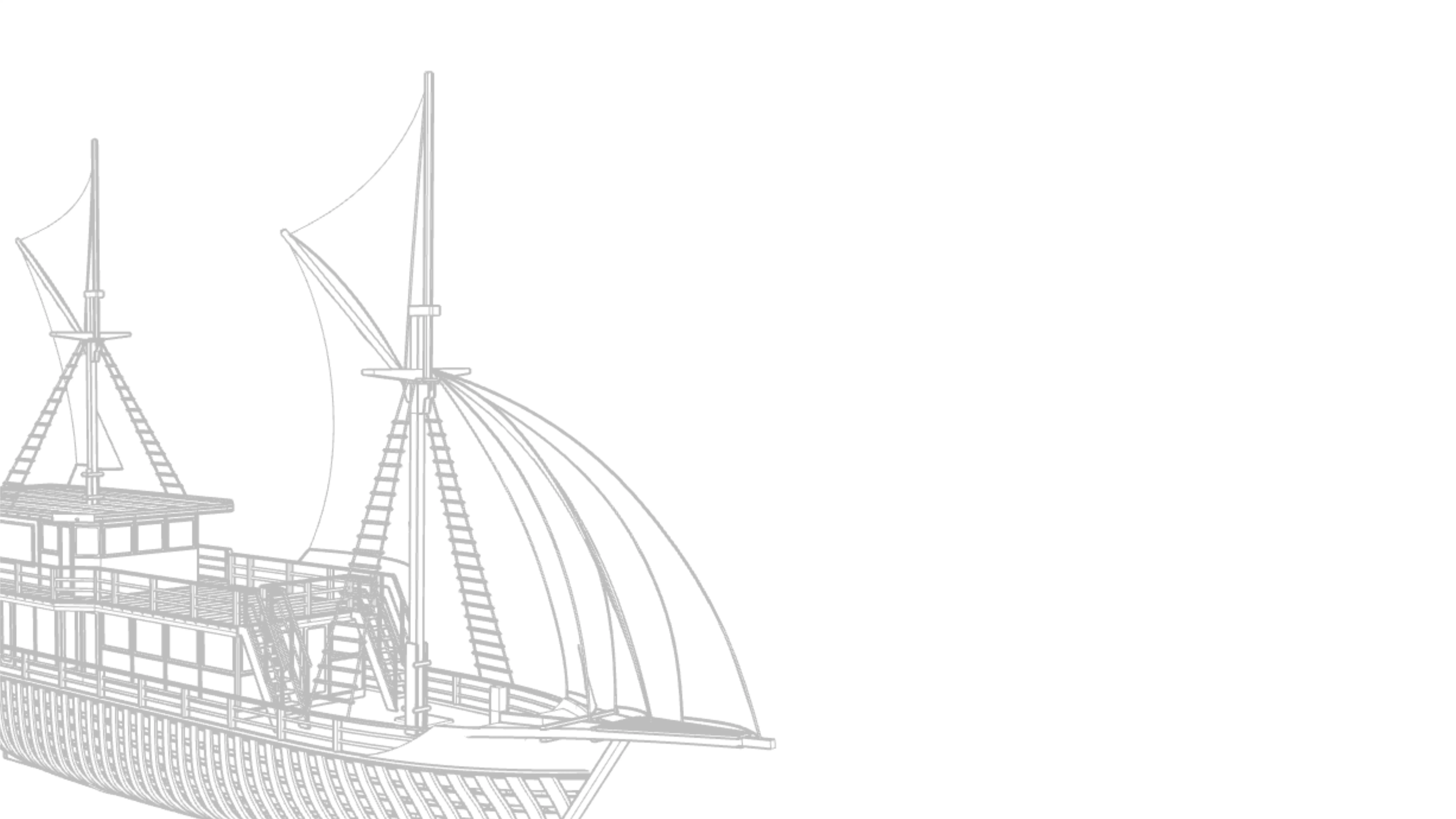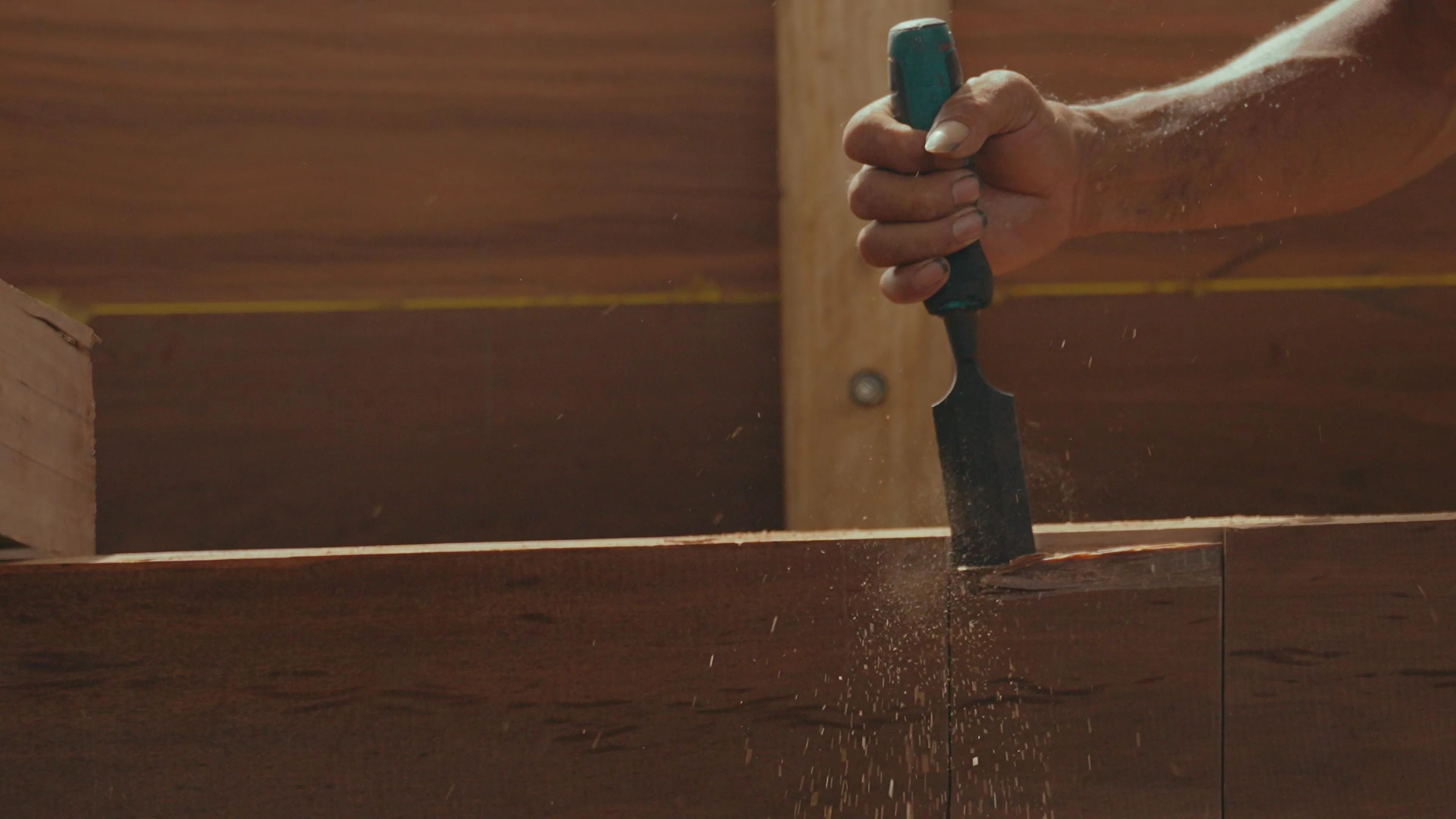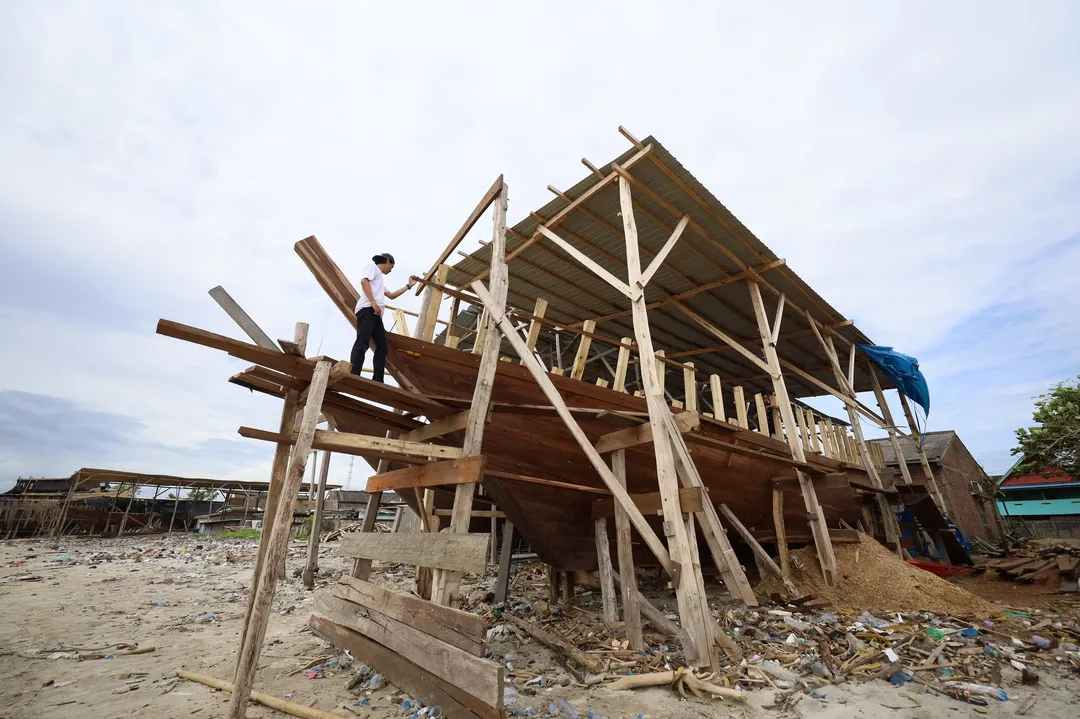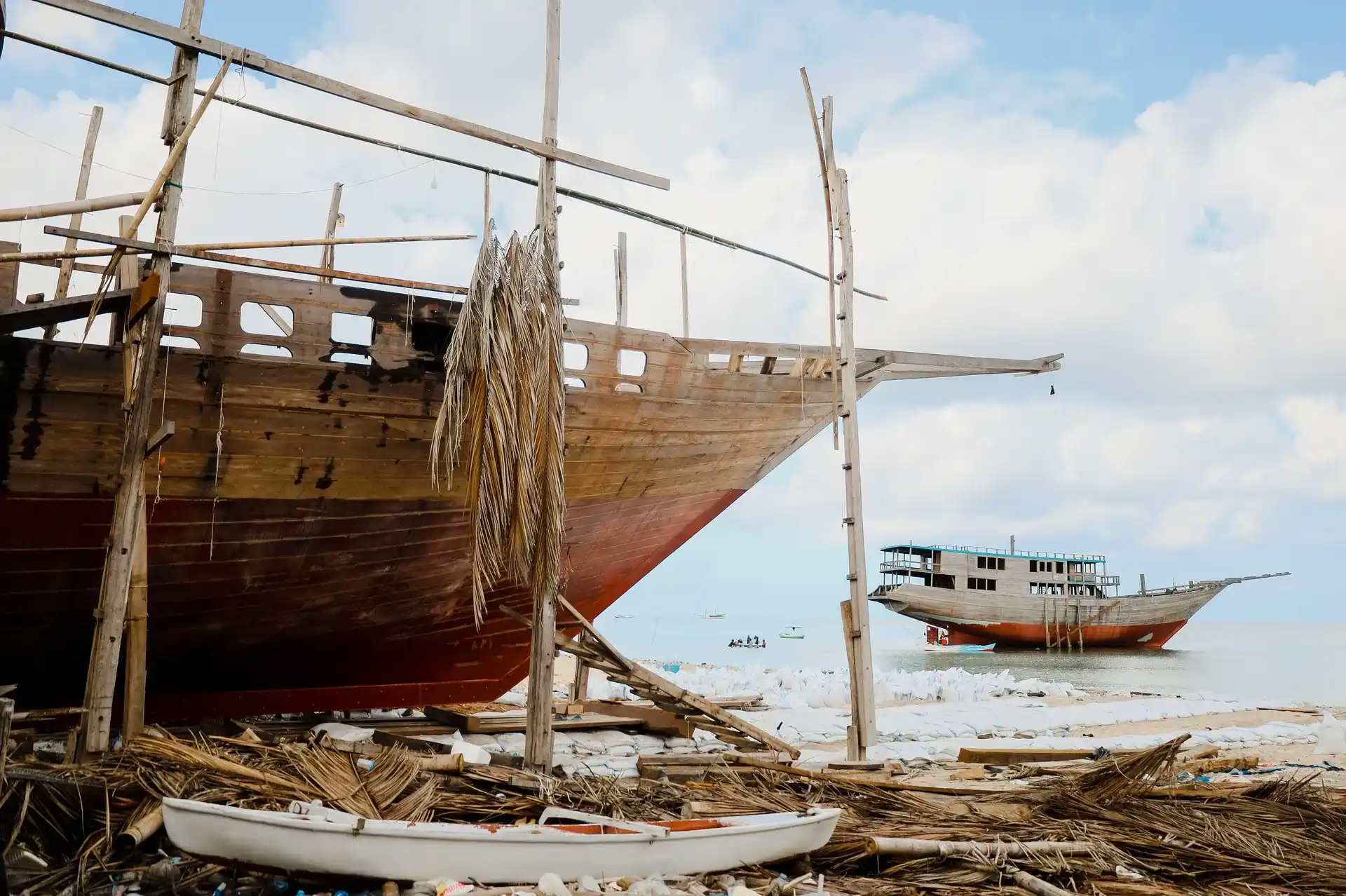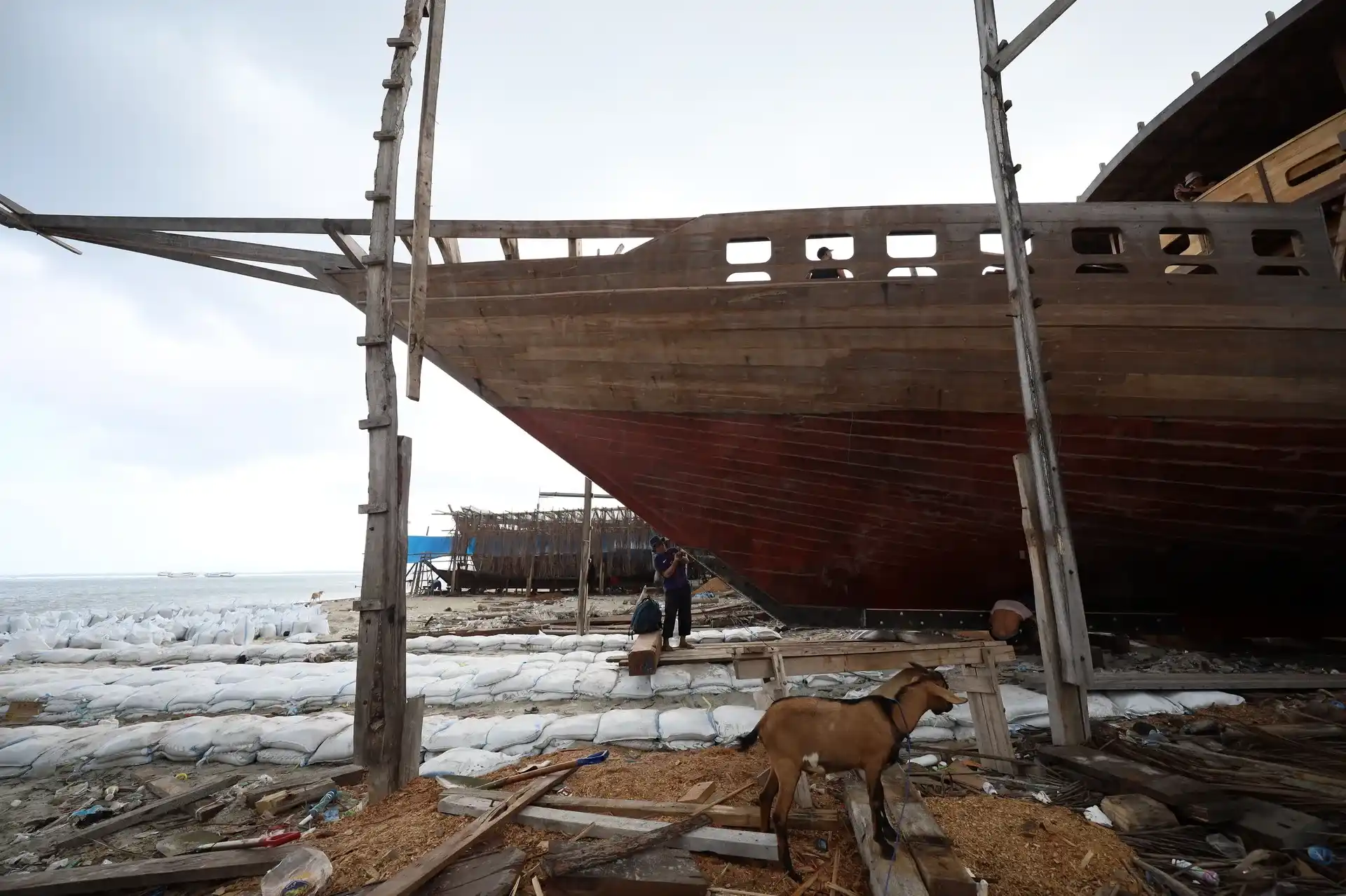Phinisi vs. Boat: Tradition and Innovation in Indonesian Maritime
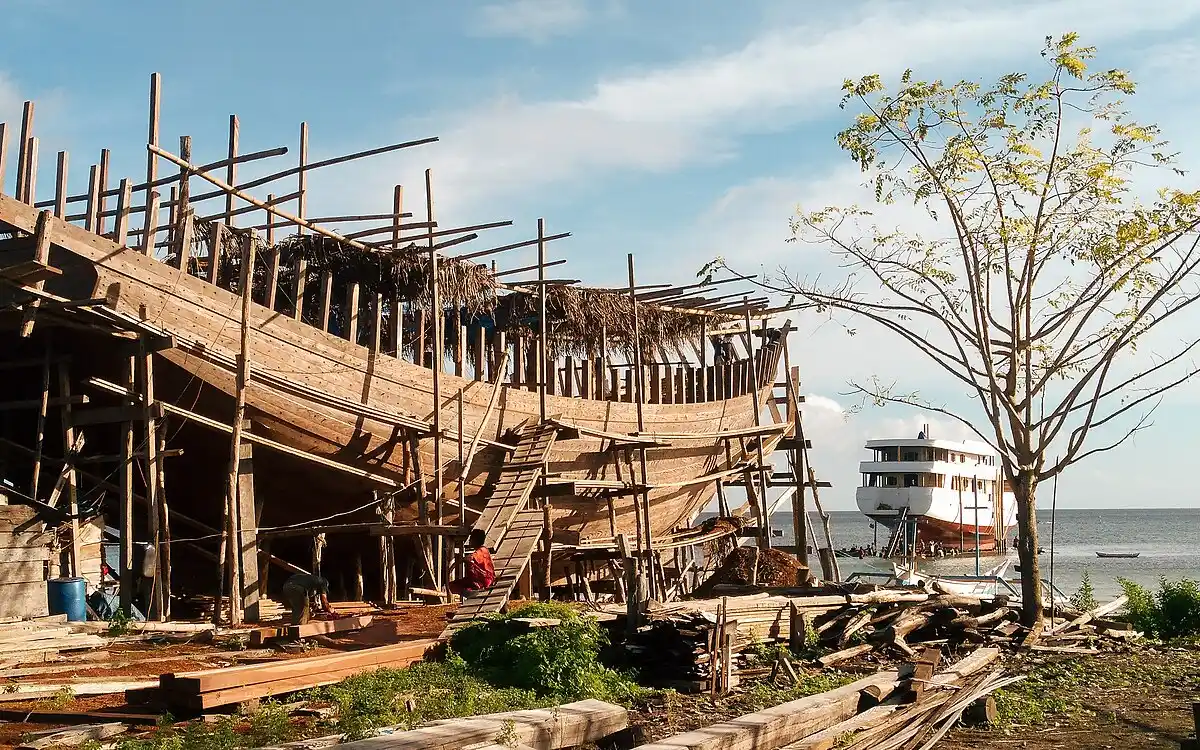
Phinisi vs. Boats is a comparison that highlights Indonesia’s rich maritime culture. Indonesia, with over 17,000 islands, has a long history of seafaring, and the Phinisi—a traditional wooden sailing ship built by the Bugis and Makassarese people of South Sulawesi—is one of its most iconic vessels.
Today, modern boats with advanced technology are common, making it interesting to explore how tradition and innovation meet in these two types of ships. Let’s dive into the differences.
What is a Phinisi?
The Phinisi is a traditional two-masted sailing ship built by the Bugis and Makassarese people of South Sulawesi, crafted entirely by hand using ancestral knowledge. Made from teak or ironwood, it features seven sails and elegant lines, serving historically for long-distance trade across the Indonesian archipelago.
Recognized by UNESCO as intangible cultural heritage, building a Phinisi involves communal rituals and deep respect for tradition. building a Phinisi involves communal rituals and deep respect for tradition. The craftsmanship not only preserves maritime skills but also strengthens community bonds, making each Phinisi a cultural masterpiece with historical significance.
What Are Modern Boats?
Modern boats refer to a wide range of vessels made with industrial materials like fiberglass, steel, or aluminum, powered by engines and equipped with advanced technology such as GPS and radar. Designed for speed, efficiency, and mass production, these boats serve various purposes including fishing, cargo transport, passenger travel, and maritime security, forming the core of today’s maritime economy.
Their versatility and technological sophistication underline their crucial role in supporting Indonesia’s vast archipelagic connectivity and economic development.
Read Also: The History of Phinisi: World-Class Cultural Heritage of Bulukumba
4 Differences of Phinis vs. Boats
Exploring the differences between Phinisi and modern boats reveals contrasts in design, craftsmanship, purpose, and cultural significance. Understanding these distinctions helps appreciate Indonesia’s rich maritime heritage alongside today’s technological advancements. Let’s dive into the key differences.
1. Functional Comparison
a. Speed and Efficiency
Phinisi ships rely on wind and seasoned navigation skills, making their journeys slower but more environmentally friendly. On the other hand, boats powered by diesel or hybrid engines can cover long distances rapidly and operate regardless of wind conditions. This distinction highlights the balance between sustainable traditional methods and the demands of modern transportation.
b. Cargo and Passenger Capacity
While modern boats are engineered to carry heavy loads or large numbers of passengers, Phinisi vessels typically support smaller operations. However, today’s Phinisi designs have been adapted for boutique tourism, offering luxury experiences with limited guests. This niche market enhances cultural tourism while sustaining traditional maritime practices.
c. Primary Uses Today
Phinisi ships are primarily used for tourism, cultural education, and heritage preservation, particularly in destinations like Labuan Bajo and Bulukumba. In contrast, modern boats are indispensable in sectors such as logistics, transportation, coast guard patrols, and commercial fisheries.
2. Cultural and Symbolic Value
Phinisi
A Phinisi is more than just a vessel; it stands as a living symbol of Indonesia’s maritime identity. The shipbuilding process itself is a communal tradition that reflects ancestral wisdom and regional pride. In South Sulawesi, villages such as Tanah Beru and Tana Lemo are not merely production sites, but cultural centers where maritime knowledge is passed down through generations and where identity is preserved through craftsmanship.
Modern Boats
In contrast, modern boats are primarily seen as symbols of progress, industrial advancement, and integration into the global maritime economy. While they serve critical functions in trade, transportation, and logistics, they typically lack the depth of cultural symbolism carried by traditional vessels like the Phinisi. This contrast reflects a broader tension between heritage and innovation in contemporary Indonesian society.
Read Also: Best Ways to Get to Komodo Island from Singapore
3. Traditional Craftsmanship vs. Industrial Engineering
Phinisi
Phinisi ships are built entirely by hand, using traditional tools and skills passed down through generations. Without blueprints, each ship is unique and carries the personal imprint of its maker. This method supports local economies and sustains traditional knowledge systems that are increasingly at risk in a modernizing world.
Modern Boats
Meanwhile, modern boats are constructed in shipyards using industrial techniques and standardized designs. Precision, safety compliance, and cost-efficiency are prioritized, ensuring that vessels meet national and international maritime standards. However, this approach often distances boats from the communities they serve, disconnecting the final product from its cultural or social roots.
4. Sustainability and Environmental Impact
Phinisi
Environmentally, the Phinisi stands out as an eco-friendly alternative. Powered by wind and constructed using mostly natural materials, it leaves a minimal carbon footprint and boasts a long operational lifespan. This makes it especially appealing in the context of sustainable tourism and responsible maritime practices, aligning with global trends toward environmental consciousness.
Modern Boats
By comparison, many modern boats rely on diesel engines, contributing to carbon emissions and marine pollution. Nevertheless, growing awareness of environmental issues has prompted technological innovations in the boatbuilding industry, including the development of electric propulsion systems, solar power integration, and the use of sustainable construction materials. These advancements signal a promising shift toward greener maritime operations.
What Is The Best?
Choosing between a Phinisi and a modern boat depends largely on the intended use, values, and environmental considerations. If the goal is to immerse in cultural heritage, experience traditional craftsmanship, or promote sustainable tourism, a Phinisi is the superior choice. It offers a unique journey that connects travelers with Indonesia’s maritime history and provides an environmentally friendly option powered by wind.
On the other hand, modern boats are best suited for practical applications that demand speed, reliability, and higher cargo or passenger capacity. These boats underpin essential sectors like commercial fishing, cargo transport, and maritime security, where efficiency and technology are paramount.
Ultimately, the best vessel choice depends on balancing tradition with modern needs, ensuring that Indonesia’s maritime legacy thrives alongside ongoing economic and technological development.
The Future of Phinisi and Boats in Indonesia
Indonesia’s maritime future requires a careful balance between preserving cultural heritage and embracing technological progress. Phinisi ships have potential beyond tourism; they can serve educational purposes, promote cultural diplomacy, and support eco-tourism initiatives. Encouraging local boatbuilders through partnerships with design institutions and maritime academies is key to preserving this traditional craft.
At the same time, ongoing investments in modern maritime infrastructure, innovative vessel technologies, and efficient inter-island transportation will continue to drive the country’s economic development. With strong government backing and increased public awareness, a maritime ecosystem can be fostered where both Phinisi and modern boats complement each other.
The contrast between Phinisi and boats goes beyond their physical design or use—it symbolizes Indonesia’s journey at the crossroads of tradition and modernity. While modern boats advance the nation with speed and practicality, the Phinisi remains a powerful emblem of its rich historical roots. Embracing both is crucial to building a maritime identity that respects the past while advancing toward the future.
Read Also: The Timeless Elegance of the Indonesian Phinisi: Where Heritage Meets Luxury
Explore Boat Construction at Riara Marine: Where Phinisi Tradition Meets Innovation
To support Indonesia’s dynamic maritime landscape, learning from skilled boatbuilders is essential. Riara Marine in South Sulawesi exemplifies this blend, preserving the time-honored art of Phinisi shipbuilding while integrating modern construction techniques.
Whether you are passionate about safeguarding the cultural legacy of the Phinisi or interested in cutting-edge maritime design, Riara Marine provides a rare chance to experience firsthand how tradition and innovation unite.
Discover how the iconic Phinisi and contemporary boats are crafted side by side, and become part of this remarkable journey in Indonesian boat construction.
Contact us today to learn more about our boat construction services and how you can be involved in preserving this extraordinary maritime heritage.
Visit Djong Arung to see The Best Phinisi Tour Destinations In Indonesia
